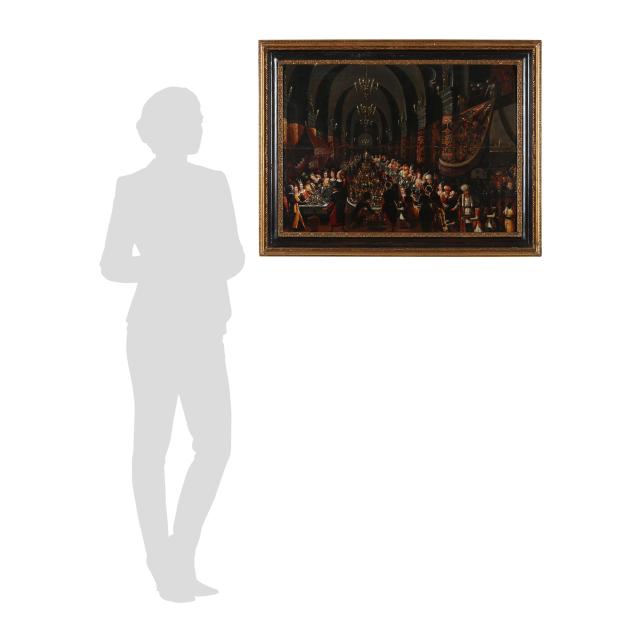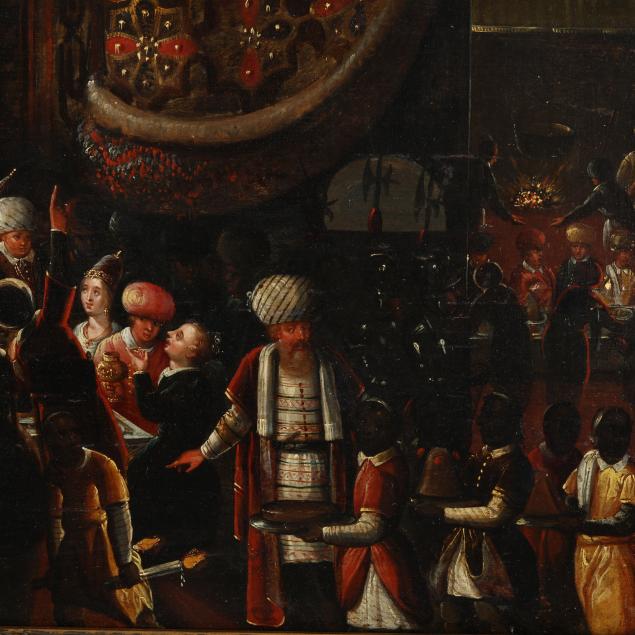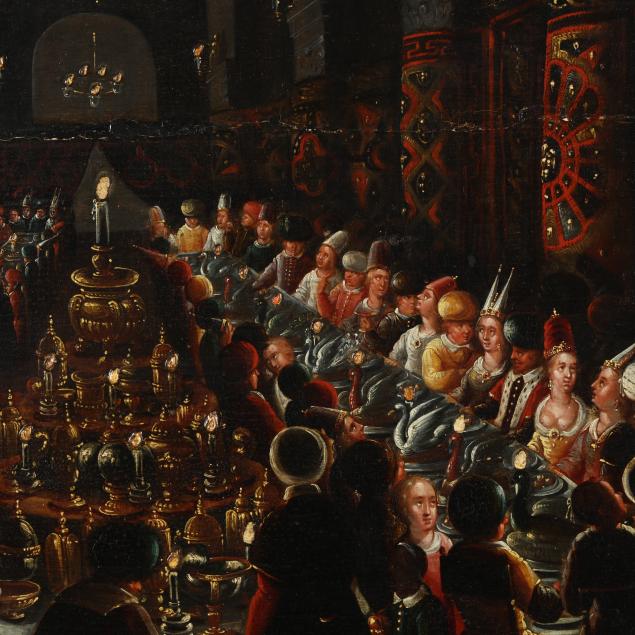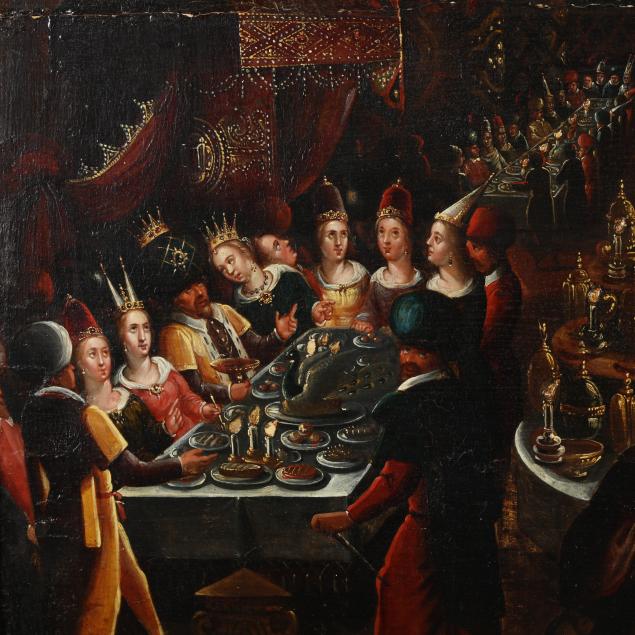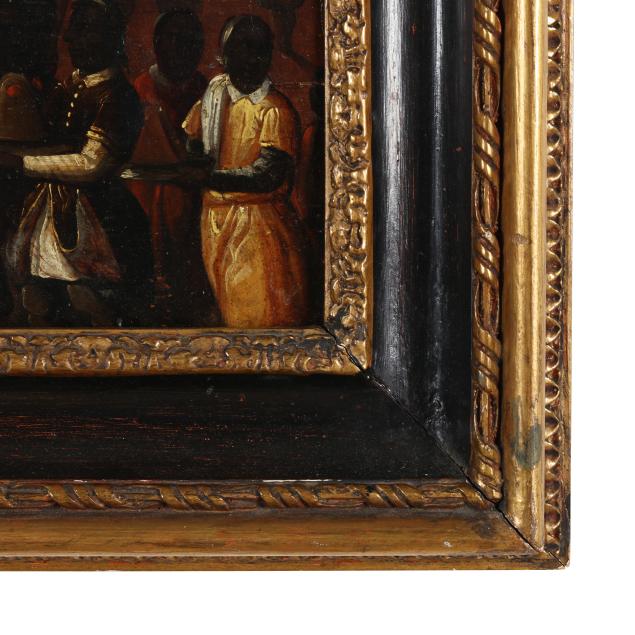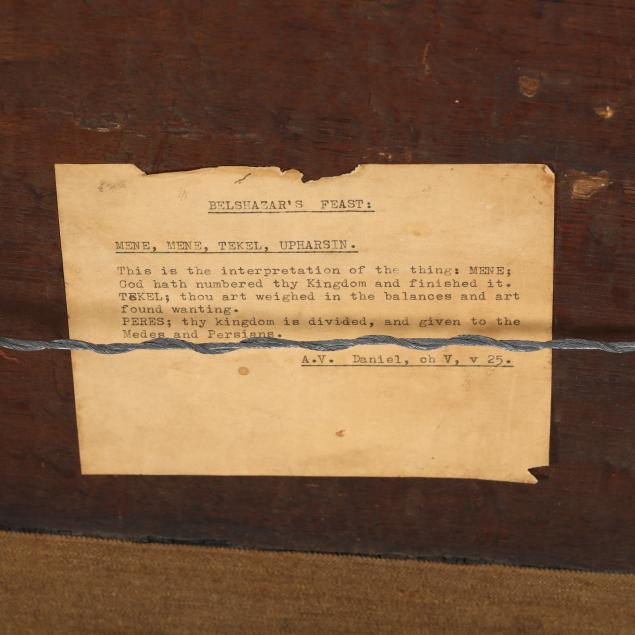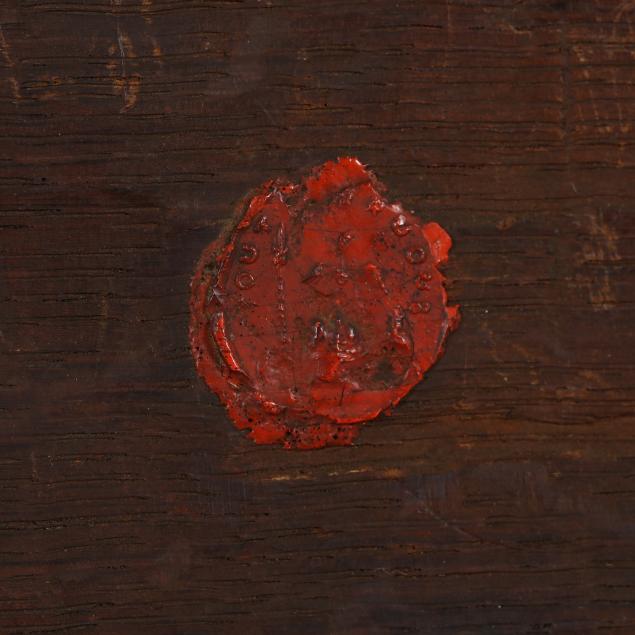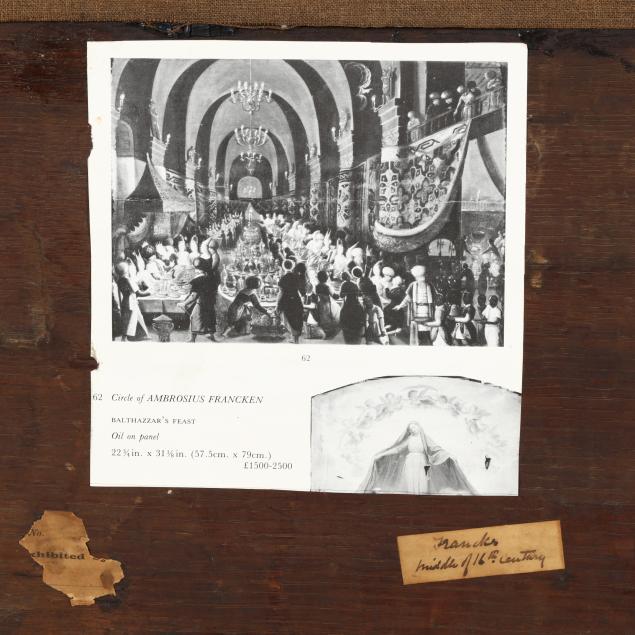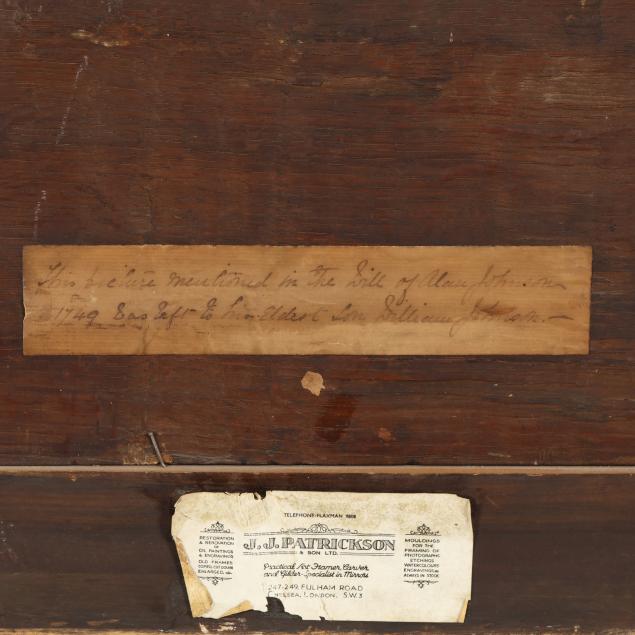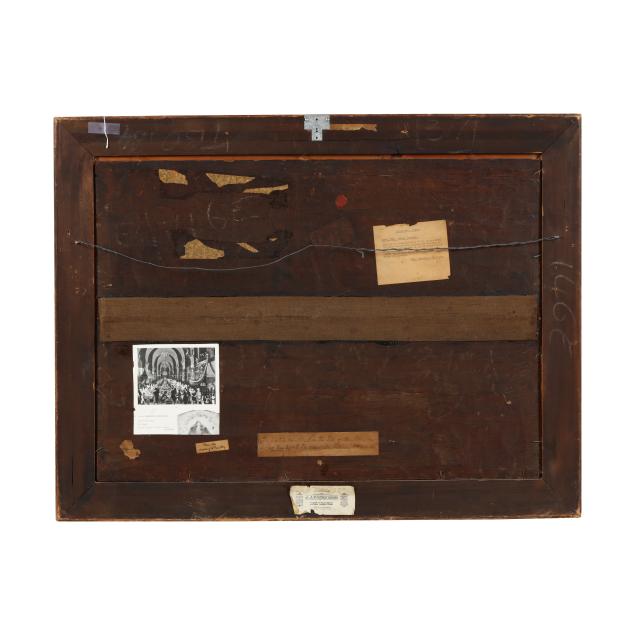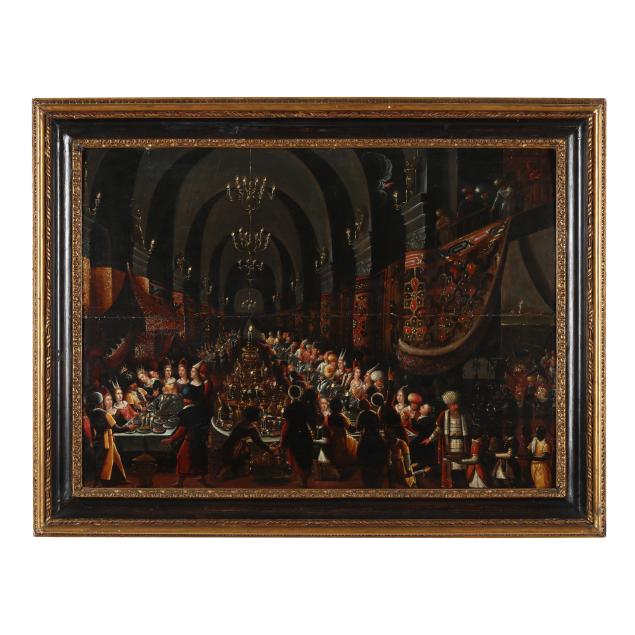
Lot 4066
Circle of Frans Francken the Younger (Antwerp, 1581-1642), The Feast of Belshazzar
Explore more items like this one.
Visit our Fine Art Department Fine Art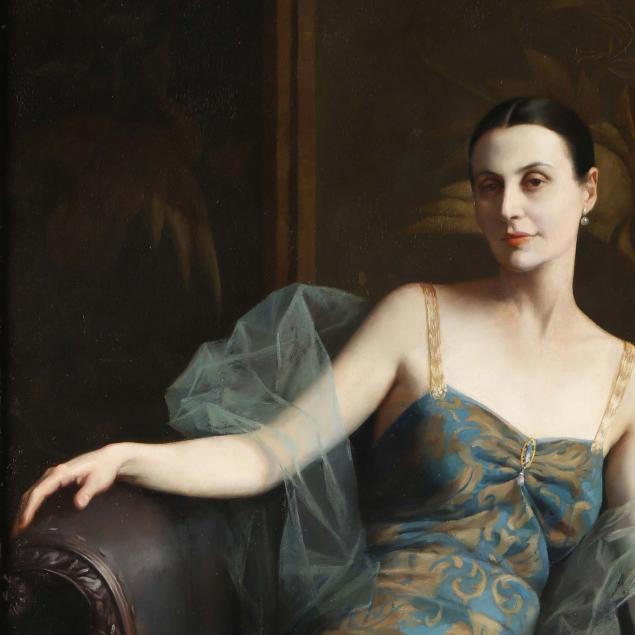
Lot Details & Additional Photographs
An old hand-written label affixed to the verso reads:
"This picture mentioned in the will of Alan Johnson 1749 was left to his eldest son Gilliam Johnson."
Panel 22 x 30 1/4 in.; Frame dimensions 28 x 36 1/8 in.
Frans Francken the Younger was a Flemish Baroque painter celebrated for his detailed and imaginative compositions. Born in Antwerp into a family of artists, Francken trained under his father, Frans Francken the Elder, and later developed his own distinctive style. He became known for his small-scale cabinet paintings, often depicting historical, biblical, or mythological themes with intricate detail and a vibrant palette.
The Feast of Belshazzar is a biblical event described in the Book of Daniel (Chapter V, verses 1-6)) that recounts the downfall of Belshazzar, the last king of Babylon. During a grand banquet, Belshazzar and his nobles used sacred vessels looted from the Temple in Jerusalem to drink wine and praise Babylonian deities, demonstrating arrogance and disrespect for the God of Israel. In the midst of the revelry, a mysterious hand appeared and wrote enigmatic words on the wall: "Mene, Mene, Tekel, Upharsin." Terrified, Belshazzar summoned his wise men, but none could interpret the message. The prophet Daniel was called and explained the writing as a divine judgment: Belshazzar's reign had been weighed, found wanting, and would come to an end. That very night, the prophecy was fulfilled as the Medes and Persians captured Babylon, and Belshazzar was killed. This story has been a powerful symbol of hubris and divine justice, inspiring countless works of art, literature, and sermons throughout history.
Panel with horizontal break extending the entire length of the panel with linen band for repair; panel slightly bowed, most noticeably at top right;
